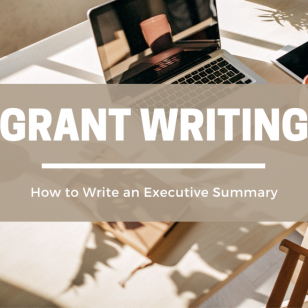By Kelsey Boudin,
President and Founder, Southern Tier Communications Strategies, LLC
How long does it take to write a grant proposal? Well, I guess, that depends. So much could go into crafting and delivering a strong grant submission that could take hours, days, weeks, months or even more than a year.
While many grant processes ask for similar information, most differ from one grantmaker to another. The most glaring differences can be found between government grants (from federal, state or regional commissions) and foundation grants. Specific variables also create interesting distinctions. Limited character and word counts often encountered in online portals could either shorten the time required to write a compelling narrative — or aggravate the process as you struggle to cram complex realities into a tiny space. You may be asked to first submit a letter of intent (LOI) or an introductory cover letter, after which you may wait months for an invitation to submit a full proposal or be rejected outright. Perhaps you have a great relationship with a foundation that has opted to work directly with you to craft the strongest possible proposal for funding.
Whatever the case, here’s what you may expect.
Time Variables to Consider When Preparing a Strong Grant Proposal
Of course, the process of writing the grant and wrangling supporting documentation for submission can only begin after you’ve done your homework. Here’s assuming you’ve done all the necessary research and highlighted a funder (or funders) around which to build your nonprofit fundraising campaign.
But especially if your grant writing strategy involves producing many proposals to greatly increase your chances for funding, as it should, you’ll need to prioritize activities to meet deadlines. Take some time for time management.
Government Grants vs. Foundation Grants
Expect a government grant to consume your professional life for a time. They’re often released on places like Grants.gov or your state’s online grant’s portal with only a few months — or less — to complete their monumental tasks. An experienced and organized grant-writing team could divide and conquer by delegating responsibilities to complete it quickly. If you’re doing it alone or with a small supporting cast? It may take many weeks or months.
Anyone who’s ever looked over the dozens — or hundreds — of pages in a government request for proposals (RFP) knows how intimidating they can be. Your eyes gloss over as you read through seemingly endless paragraphs of grant background information, justification and statutory authority. You may finally get to matters of eligibility, which themselves can be quite complex. You often see an explanation of program stipulations and a host of financials (costs, justifications, administrative overhead, contractual agreements, matching requirements, etc.).
Then you may finally get to the grant narrative portion, for which answers are likely very prescriptive in terms of formatting, length and depth of questioning. Most often, points are earned for answering entire sections and for adequately responding to each individual question and subquestion. (A single question may have several subsections, each requiring complete and accurate answers fitting the grant’s priorities). Anticipate hunting down or procuring stacks of supplementary documentation including budget info, tax forms, competitive bids, memoranda of understanding, letters of support and organizational details.
Foundation grants may be more friendly and less cumbersome. Processes may still be strict and complex, but they’re traditionally far less daunting. Done quickly with a lot of administrative support, they may take a day or two to complete. Single grant writers or small staffs may need one or several weeks to complete and refine a foundation grant application.
Narratives may require only basic programmatic and organizational information in one to two pages. Others mandate much more detail and justification in 10 or more pages — or somewhere in between. Foundations wish to know much of the same information about your program and mission. However, they’re typically geared toward great storytelling and seeing the human impact behind your initiative than government funders, which often justify grant expenditures through hard data. You’ll still likely be required to at least provide standard organizational documentation (501(c)(3) determination, tax forms, board membership, etc.)
Character and Word Limits
Very few grantmakers today accept hard-copy proposals. Whether they’re a government entity, private foundation or a charitable trust, they most likely manage grant submissions through an online portal. A select few — usually very small foundations — will accept proposals via email.
Going digital allowed funders to control the length of submissions for their own time management. No longer would they have to sift through stacks of documents with narratives struggling to find the point. Most online grant portals offer questions with text and dropdown boxes for responses. Answer segments are often governed by character or word counts, which either won’t accept the response as valid until it’s cut down to size or will automatically reject an errant submission.
You may at first be excited that some narrative sections may allow only 1,000 characters (counting spaces) to answer a question. Well, the character count from the beginning of this section to the end of this sentence is 1,044 characters. I just started writing, and already I’m over the limit. Oops. Have you ever tried explaining something important and complex in just a few short sentences? It can be mind-numbingly difficult.
Limited space can be just as confounding as unlimited space. While you might prepare weeks to write a grant proposal with free reign, you should allot just as much time for one with limits. Writing with brevity takes a knack for amplifying key points succinctly, with zero fluff. In my experience, it takes 10 times as long to decide what to delete than it did to write it.
The Letter of Intent or Cover Letter
Many grant processes now require a letter of intent or a simple cover letter to touch base before being invited to submit a full proposal. An LOI or a cover letter may take only a few hours — perhaps a day or two if you’re deliberate — to finish and submit. You may wait weeks or months to learn if your grant initiative was accepted or rejected. For the sake of time management, you should spend the downtime seeking other avenues for support or funding. Producing multiple proposals in any span of time always increases your chances for being funded.
A cover letter often follows a standard one-to-two page business letter format. An LOI may follow a format specified in an online portal or, likewise, that of a business letter. In any case, remember the LOI or cover letter requirement was likely established to value the time of grant reviewers. The funder would rather weed out poor proposals with a quick review to spend more time later on those likely to deserve their support.
You must respect their time. Be succinct. Be powerful.
Collaborative Processes
Let’s hope you have established relationships with fellow nonprofits, grantmakers and community benefactors. You may collaborate on initiatives with nonprofits in your area that share common missions and goals. You may have invited a grantor to partner in your nonprofit’s success. These are important relationships that open opportunities for larger-scale projects — and larger-scale grant funding.
Collaborating on an application with another nonprofit(s) requires diligent coordination and delegation. Know who’s responsible for completing each portion of the grant application, if you’re tackling it by committee. In that light, beware of processes you don’t control. Budget an extra few weeks, if possible, to allow slower workers to complete tasks or to resolve unexpected roadblocks.
Perhaps you’re lucky enough to have a great relationship with a grant funder that wants to support your project. Some have been known to open special application processes just for one nonprofit to be virtually guaranteed funding. The grantmaker will likely assign a grant officer to work the application through with you. They will review drafts and supplementary documentation to provide feedback toward a perfect proposal aligning with their priorities. This back-and-forth process may take weeks, months or even over a year.








How To Write A Grant Report – Fallsgardencafe
February 20, 2022 @ 12:45 pm
[…] Done quickly with a lot of administrative support, they may take a day or two to complete. Single grant writers or small staffs may need one or several weeks to complete and refine a foundation grant application. Narratives may require only basic programmatic and organizational information in one to two pages. via […]